E-Travel Log #9: Lijiang and Dali - Minority Cultures
Attention Teachers: Please see teacher notes below.
Dear Students:
Zao xiang hao! (Good morning!) In this travel log, we’re going to take a bus from Xishuangbanna (the rain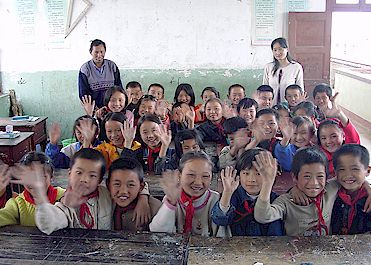 forest) to two other towns in China’s Yunnan Province, Dali and Lijiang. As we travel, we’ll meet people from two more Chinese
ethnic groups, the Bai and the Naxi. We’ll also tell you
a story called The Peacock Princess; prescribe some Chinese medicine; teach
you how to count to ten in two Chinese languages; challenge you with two more
guess-who poems about Asian animals; and list some more answers to your questions.
Enjoy!
forest) to two other towns in China’s Yunnan Province, Dali and Lijiang. As we travel, we’ll meet people from two more Chinese
ethnic groups, the Bai and the Naxi. We’ll also tell you
a story called The Peacock Princess; prescribe some Chinese medicine; teach
you how to count to ten in two Chinese languages; challenge you with two more
guess-who poems about Asian animals; and list some more answers to your questions.
Enjoy!
THE STORY OF THE PEACOCK PRINCESS
Before we hit the road again, we’re going to tell you a Dai story from Xishuangbanna called The Peacock Princess. The Dai are the majority minority in China’s rain forest region. (We met some Dai students at the Jinha Elementary School in the last travel log. You can also meet them here.) This is a very old story that has been passed down through many generations.
Once upon
a time in Xishuangbanna there was a Dai chief named Zhao Meng Hai. His son,
Zhao Shu Tun, was very handsome and brave – and many young women really
liked him. But, Zhao Shu Tun was waiting for someone that he really liked.
One day, Zhao Shu Tun’s loyal friend, a hunter, told him that seven
beautiful Peacock Princesses would fly down to Lang Xi Na Lake the next day
to play. The most beautiful one would be the seventh, called Lan Wu Luo Na.  “Just hide her peacock cloak,” said the hunter, “and she
won’t be able to fly.”
“Just hide her peacock cloak,” said the hunter, “and she
won’t be able to fly.”
“Really?” Zhao Shu Tun replied. He didn’t believe it; but still he went to the lake early the next morning.
At the lakeshore,
Zhao Shu Tun hid himself in the bushes and, sure enough, seven peacocks soon
flew from far over the horizon to the lake. After landing, they turned into
seven beautiful young women and danced a beautiful peacock dance. Zhao Shu
Tun immediately fell in love with the seventh princess, who was the most beautiful
one. He did what the hunter told him and hid her peacock cloak. When all of
Lan Wu Luo Na’s sisters had flown away, Zhao Shu Tun walked out from
behind the bushes. Lan Wu Luo Na was very shy but she couldn’t fly away.
She also fell in love with the young man and they got married.
Not long after they were married, a neighboring tribe started a war. In order
to defend their land, Zhao Shu Tun led his people’s army in battle.
At the beginning, every day there was news about Zhao Shu Tun’s army
being defeated. One day, after more bad news, an evil wizard told Zhao Shu
Tun’s father that Lan Wu Luo Na was the one that brought disaster and
misfortune to the tribe and so she must be killed. The chief was fooled and
believed what the wizard said. He ordered the peacock princess to be burned
the next day.
The next day, the chief’s guards brought Lan Wu Luo Na to the center of town to be executed. Tears fell down her face. She wasn’t crying for herself, but for her husband who she knew would be terribly sad to find her dead when he came back. At last she asked the chief: “Can I wear my peacock cloak for the last dance?” Zhao Meng Hai agreed. Lan Wu Luo Na wore her cloak and performed a dance that filled the tribe with peace and love. Slowly, she turned into a peacock and flew away.
On the same day, news arrived that Zhao Shu Tun won the battle. Among all the people that came to celebrate his success, he couldn’t find his wife. When he was told what had happened, he decided to look for her. His hunter friend gave him three magical arrows and wished him good luck.
Zhao Shu Tun walked for several days, overcoming many obstacles along the way, to reach the valley homeland of the peacocks. When he arrived, there were two elephant-like rocks blocking the way. He used the first magical arrow to shoot away the rocks.
The king
of the country was Lan Wu Luo Na’s father. He didn’t like how
his daughter was treated by Zhao Shu Tun’s people and decided to give
him a test. He had all his daughters cover their faces with red veils and
put candles on their heads. He ordered Zhao to tell which one was his wife
by shooting the candle on her head. Using the second magical arrow, he shot
the candle on Lan Wu Luo Na’s head. So, the king let Zhao Shu Tun take
his daughter back to the Dai homeland.
When they returned, the evil wizard tried to run away. He turned into a vulture
but Zhao Shu Tun took out the last magical arrow. The arrow of justice killed
the wizard and the Dai people lived in peace and happiness once again.
KING OF THE BIRDS: PEACOCK VS. PHOENIX
Chinese people love
peacocks. Some say the peacock is the king of birds, but others say the phoenix
is. So, in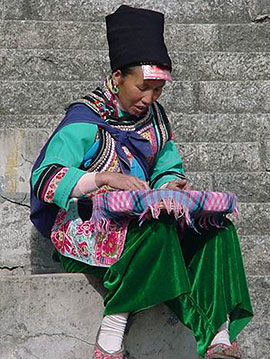 the next report, we’ll tell you a Chinese story about the phoenix.
the next report, we’ll tell you a Chinese story about the phoenix.
BUS TO DALI, BIG WISDOM
OK, so let’s hop on a bus and ride from Xishuangbanna back up into the mountains of Yunnan. Our first stop is a town called Dali. (In Chinese, da means ‘big’ or ‘great’ and li can mean ‘reason’ or ‘wisdom.’) Dali is home of the Bai people who have a 4000 year old history. It is best known for Dali Stone, beautiful colored and patterned granite, its Three Pagodas and the March Street Market Festival. The March Street Market Festival is a week long celebration that happens every year in March (of the Chinese Lunar Calendar) with horse-races, dragon boat races, singing competitions, traditional musical instrument competitions, a colorful parade featuring several different minority cultures and, of course, a giant market that stretches throughout the town and features traditional and modern products from all over the region.
GOOD FOR WHAT AILS YOU
Many people from other parts of China go to the March Street Market Festival in Dali each year to stock up on traditional Chinese medicine. Here are a few remedies available at the market and the ailments they treat.
Tian Ma: It’s a plant used to cure headaches and lower blood pressure. It can be ground into powder and taken both uncooked and cooked. It’s common for people to cook this powder into chicken or mushroom soups.
San Qi: This is a plant for killing bacteria. It is said that Chinese people used
the powder of San Qi to make toothpaste before modern toothpaste was available.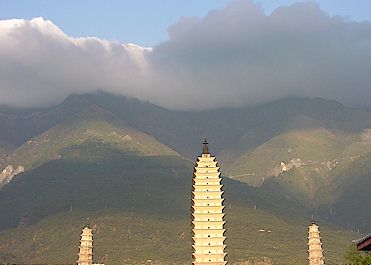
Huang Qi: It’s a plant for boosting energy, Bu Qi. It helps patients to rebuild health when their immune system is low.
Lin Zhi:
A mushroom that grows around rocks and is hard to collect. In Chinese mythology
Lin Zhi supposedly could bring dead people back to life. Many people still
believe it has special power, while others simply believe it can help a person
recover from diseases.
CHINESE LANGUAGES
China has one official language, Mandarin. It’s based on the Beijing dialect and all Chinese students speak this language at school with their teachers and classmates. But China has many other dialects and languages. Almost every town or region has its own dialect which people use as their mother tongue. In Shanghai, for example, people speak Shanghainese, a dialect that is so different from Mandarin that Chinese-speaking people who are not from Shanghai cannot understand it; and in Dali, many people speak the Bai language.
Over the years, Mandarin has influenced the Bai language. Here’s how to count to ten in both languages. Which numbers are the same or similar in both languages?
Mandarin
1. yi
2. er
3. san
4. si
5. wu
6. liu
7. qi 
8. ba
9. jiu
10. shi
Bai
1. yi
2. gou
3. sa
4. xi
5. wua
6. fu
7. qi
8. bia
9. jin
10. zhi
LIJIANG: BEAUTIFUL RIVERS
Back on the bus for
three hours , up and over more mountains, and we are in another famous Yunnan
city called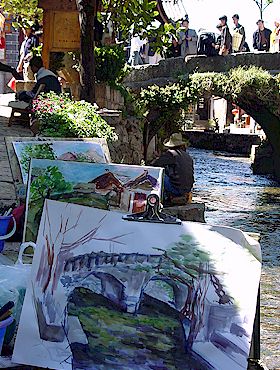 Lijiang or, in Chinese, Beautiful Rivers. Lijiang is a big modern city, but
one small corner of it is an ancient town, complete with beautiful old wooden
houses, stone bridges and cobblestone streets lined with bright red lanterns.
Lijiang or, in Chinese, Beautiful Rivers. Lijiang is a big modern city, but
one small corner of it is an ancient town, complete with beautiful old wooden
houses, stone bridges and cobblestone streets lined with bright red lanterns.
Lijiang is home to the Naxi people. The Naxi are descendents of a nomadic tribe called the Qiang and they are traditionally a matriarchal society (which means women are the heads of the families). Naxi women wear very distinctive blue clothing. They often sport a matching blue hat and a sheepskin cloak that is white, symbolizing the sky, and black, symbolizing the earth. On the back of the cloak, there are seven embroidered stars. The cloak symbolizes that the Naxi women work from dawn to night and are very diligent.
THE DONGBA LANGUAGE
We mentioned above
that Chinese Mandarin is the official language of China. Instead of letters
that can make up many different words, it has a different character for each
different word. A total of ten thousand characters are currently used! Originally,
Chinese Mandarin characters were pictographic, that is, each word was like
a simple drawing of the thing it stood for. The word horse, for example, looked
like a horse; the word bird looked like a bird; and the word sunrise looked
like the sun above the horizon. But over the years the language has changed
and nowadays only a few characters actually resemble what they mean.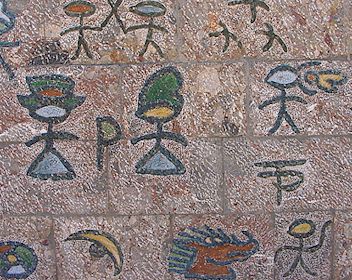
Naxi priests, called Dongba, however, still use a pictographic language today. There are still about 20 living Dongbas in Lijiang that are keep the language alive. But the language will soon die out if there are no young people willing to learn more about their ancient heritage and become new Dongbas.
BLACK DRAGON POOL
One famous part of
Lijiang is called Hei Long Tan, the Black Dragon Pool, a beautiful lake formed
by spring waters that flow down from Elephant Mountain. In the old days, people
believed a dragon lived in the lake. So, in the Qing Dynasty (~1737 A.D.),
the emperor built the Dragon-God Temple next to the lake so people would go
there to pray to the dragon for rain in times of draught. You see, in Chinese
mythology, dragons are the kings of water and are therefore in charge of rainfall.
Since people believed that dragons spent most of their time in the water and
only fly up to the sky when they wanted to make it rain, they would pray close
to the water. 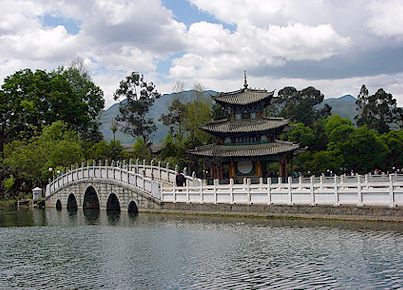
CHINESE BRIDGES
Lijiang, as the name implies, also has many rivers – and therefore many bridges. Bridges are an important part of the Chinese culture. To Chinese people, bridges symbolize safety, solidity and union. One ancient poem describes Chinese bridges as ‘sleeping dragons barely touching the waves, rainbows flying across the water.’
WHITE DALI AND RED LIJIANG
There is an interesting contrast between Dali and Lijiang. The Bai, who live in Dali worship the color white for its purity and simplicity. Their clothes are mostly white-based and so are their houses. Even their name, Bai, means ‘white’ in Chinese.
On the other hand, red is the dominant color in Lijiang. It shows up on painted wooden walls and gates throughout town; all the Chinese knots that hang from the walls; all the God of the Gate posters posted on the doors (see photo below); and all of the giant lanterns that hang in each street.
THE COLOR RED
Red is not only the
color of Lijiang, it’s also the favorite color of most Chinese people.
For starters, the national 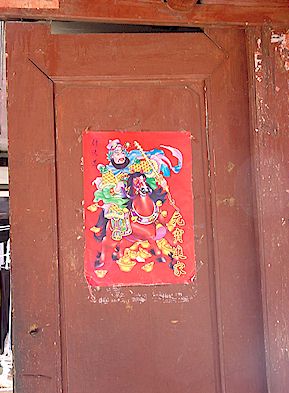 flag
is red. Also, when women get married in China, they traditionally wear red,
not white. In the old days, the bride also wore a red veil over her face so
that no one could see her. Back then, parents arranged the marriages and the
husband and wife often did not know each other before they were married.
flag
is red. Also, when women get married in China, they traditionally wear red,
not white. In the old days, the bride also wore a red veil over her face so
that no one could see her. Back then, parents arranged the marriages and the
husband and wife often did not know each other before they were married.
Red is considered a lucky color in China and, traditionally, Chinese people thought that devils are afraid of the color red. On Chinese New Year, children get money from their parents and grandparents in red paper bags. It’s called Ya Sui Qian, ‘money for defeating the devils.’
DEVIL MONEY
Legend has it that there used to be a devil called Sui and it came out every year on New Year’s Eve to take away small children. People thought of all kinds of ideas to protect their children, including lighting lots of fireworks to scare the evil spirits away. One year on New Year’s Eve, Sui came out again to steal children. It walked into one child’s room but suddenly something shined in the dark. Sui got scared and ran away. The people realized that there were a couple of coins in a red bag under the child’s pillow. From then on, people started to give money in red paper bags to children on Chinese New Years in order to keep their children safe.
Even today, Chinese children get lots of pocket money on Chinese New Years. The more relatives a child has, the more money he or she might get for the New Year. So thanks to this devil called Sui, the Chinese kids have been enjoying this tradition a great deal!
LIJIANG ETHNIC
ORPHANS’ SCHOOL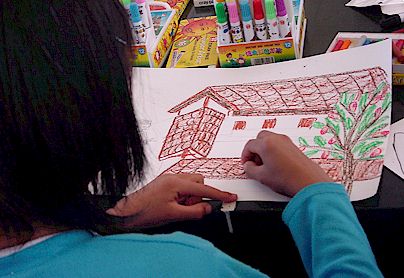
If there are some children in China that might not look forward to the Chinese New Year, it’s the children who have lost their parents and don’t have other relatives to take care of them. In July of 1996 and November of 1998, two earthquakes in Lijiang claimed the lives of many people and made hundreds of children orphans. The Lijiang Ethnic Orphanage School was founded in 1999 and currently has 340 students, from 14 ethnic minority groups, such as the Naxi, Bai, Yi, Pumi, Tibetan, Zhuang, Mengba, Hui, Dai, Shuitian and Mosuo people.
We visited the Lijiang Ethnic Orphan’s School and made two Web sites featuring the students who go there. Visit the project Web site to meet the students and take a tour of their school and town. You can also see artwork created by the same students on the project Web site. (Your teacher has the URL.)

GUESS WHO
Here are two more guess-who animal poems, each with seven syllables per line. Guess who!
Animal #1
Pig’s
figure, elephant’s schnozz
Cousin of horse and rhinos
’Course your offspring must be odd
Watermelon bambinos
Animal #2
Ornamental fan
Oriental fame
Symbol of beauty
Some say you are vain
The answers to the poems in the last report are the orangutan, the Burmese python, the king cobra, the golden langur and the Queen Alexandra birdwing butterfly (in that order). You can read lots more guess-who Asian animal poems written in gushi form – and see photos of the animals -- by visiting the project Web site. (Your teacher has the address.) (Note: Travel Log #10 will not contain guess-who animal poems.)
WRITING GUSHI
So have you tried
writing some gushi yet? In the other reports, we’ve been telling you
how real gushi use a repeated number of syllables (five or seven per line)
and a sequence of word types to create rhythm. Sometimes, they also have a
repeated pattern of tones (since Chinese has four tones). We can’t repeat  Chinese tones using English, of course, but we can try to include alliteration
(repetition of letter sounds) and rhyming, which both add to a poem’s
rhythmic effect.
Chinese tones using English, of course, but we can try to include alliteration
(repetition of letter sounds) and rhyming, which both add to a poem’s
rhythmic effect.
Also, real gushi often end with a line that makes the reader think or feel an emotion, sometimes connecting the content of the poem to a historical event, a philosophy or an observation about life. Or the poems end with a twist – something that is not expected. You might have noticed that we’ve tried to do that in some of our guess-who animal poems, too.
It’s fun to write gushi! So, what are you waiting for? Get your pen out and give it a whirl!
Q & A EXCHANGE
Here are more answers
to your questions. Students at Xiahe Labrang Tibetan Elementary School answered these questions:
1. Do you have computers at home and schools? No, we
don’t have computers at home or at school.
2. Do you have Ford tractors? No, we don’t have
Ford tractors but we do have other tractors.
3. Do you have ice cream? Yes, we do.
4. Do you play with legos? No, we have never heard of
them.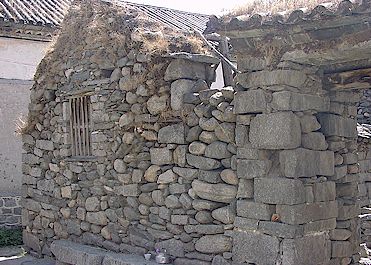
5. Do you have ‘beanie babies’ or other popular stuffed animals? No, we don’t have ‘beanie babies’,
but we do have some stuffed animals like panda bears.
6. Does everyone eat with chopsticks? Yes, we all use
chopsticks to eat, although sometimes when we eat dumplings we just use our
hands. We use spoons for the soup.
7. What are your favorite
toys? We run with rubber tires and play toy cars. Girls
like to play with dolls.
8. What kind of pets do you have? We have dogs, and
cats for pets. We sometimes also play with baby sheep, goats and yaks from
our herds.
9. What are some of your favorite sports you watch or play? We
play basketball, soccer and run. Girls like to play tricks by jumping around
long rubber bands. We also like to jump rope. We love to watch soccer on TV.
10. Do you have video games? No, we don’t. (Note from Lilia: The students who answered these questions live in a rural area. The responses would be quite different if answered by students in Shanghai, for example.)
Sixth graders at the Shangyin Elementary School in Shanghai, China answered these questions:
1. What is your favorite snack? Our favorite snacks include potato chips, cakes, Dove chocolate bars, hamburgers, chicken wings, crackers and ice cream.
2. What type of pets
do you have? Only a few students have pets now such
as dogs or cats. Most students used to have pets such as parrots, gecko, guinea
pigs, turtles and rabbits. One student from Taiwan had an iguana as a pet
once and one student had a tarantula once.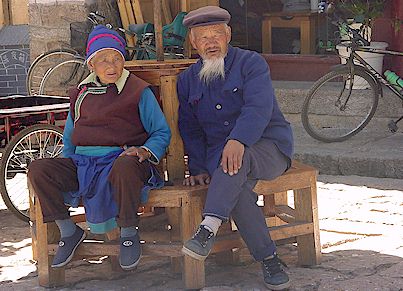
3. What sports do you play? We play basketball, soccer, volleyball, badminton and Ping Pong. We also like to swim.
4. For how long do you go to school? We have classes from 7:30 – 11:30 in the morning and 12:45 – 3:55 in the afternoon. We have school from September to January and then from March to June.
5. Does the leader of your city do a good job? Yes, pretty good.
6. What do you do to energize yourself? We energize ourselves by sleeping, listening to music, playing video games, watching TV, drinking cold soda or going bungee jumping (one student).
7. What do you do to relax? We sleep, play musical instruments or play video games.
8. What is the most important thing you have learned in your life so far? One student thinks he learned how to make himself happy; one student said he learned life is precious. Most students think they learned that their parents, education and money are important things.
9. Why is it important to you to make art? Because making art relaxes us.
10. What is one way you think the world could be made better? We think if there was no war, if we could protect our environment better, if there was better education for everyone and if everyone had freedom, the world would be a better place.
THAT’S ALL FOR NOW
That’s all for this travel log. In our next and last report, we’ll fly to Shanghai, where we’ll wrap our trip with a tour of the city and a visit to an art and music school. Till then, learn lots! Zai jian!
Paul and Lilia
China Project Coordinators
=============================================
Teachers:
View artwork by students from Dali and Lijiang China here. Take a tour of Lijiang here.Visit the Lijiang Ethnic Orphan’s School and meet students who live there here. Find more animal poems, plus photos and facts about the animals, here.
You may also view
a picture book featuring gushi poems by famous Chinese poets and illustrated
by students from the Dali #1 Middle School here.
E-Travel
Log #9: Lijiang and Dali - Minority Cultures |
